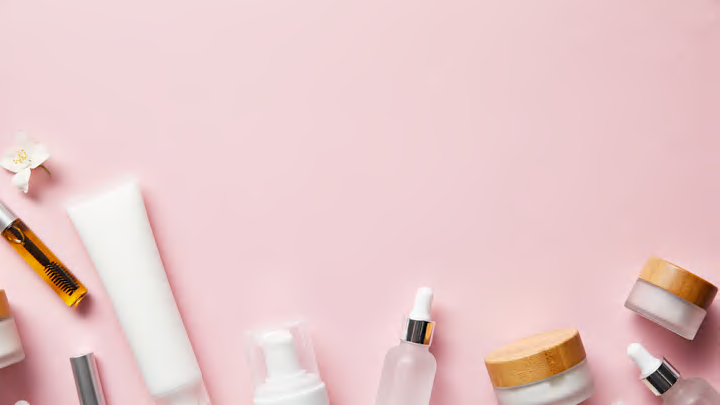Understanding Labels on Beauty Products

Ever turned over a beauty product and stared at the ingredient list, only to feel like you were reading a chemistry textbook? You’re not alone. From buzzwords to microscopic fine print, beauty labels can be more confusing than helpful. But behind every “hydrating serum” or “clean beauty” claim lies a wealth of information—some of it useful, some of it pure marketing.
Learning to decode what’s actually in your skincare, haircare, or makeup products puts you in control. It helps you make smarter, more informed choices based on your skin type, values, and real results—not just fancy packaging.
Here’s how to read and understand beauty labels without needing a science degree.
Start with the Ingredient List
The ingredient list (often labeled as "Ingredients" or "INCI"—short for International Nomenclature of Cosmetic Ingredients) is where the real story is told.
How it works:
- Ingredients are listed in descending order by concentration, meaning the first few make up most of the product.
- Active ingredients—like salicylic acid or retinol—may be listed separately at the top if they’re classified as drugs in your country (like SPF or acne treatments).
- Ingredients used in concentrations below 1% can appear in any order after the first few—so a plant extract listed last might just be there for fragrance or label appeal.
Pro tip: If a product is marketed as featuring a specific “star ingredient” but it’s listed near the end, it may not do much at all.
Watch Out for Common Marketing Terms (and What They Really Mean)
Some label phrases sound reassuring but don’t always tell the whole truth.
- “Hypoallergenic”: Suggests less chance of causing a reaction—but isn’t a regulated term and varies by brand.
- “Dermatologist-tested”: Doesn’t necessarily mean approved—just that a dermatologist was involved in some capacity.
- “Non-comedogenic”: Indicates it shouldn’t clog pores, but again, there's no universal standard.
- “Natural” or “Organic”: Unless certified by a reputable body (like USDA Organic or COSMOS), these words are largely unregulated in the beauty space.
- “Fragrance-free” vs. “Unscented”: “Fragrance-free” means no added scent; “unscented” may still contain masking fragrances to neutralize smells.
Always check the full ingredients list to see what’s actually inside.
The First Five Ingredients Matter Most
Because ingredients are listed in order of concentration, the first five usually make up the majority of the formula. If those are mostly water and silicones, and the beneficial ingredients are far down the list, the effects might be minimal.
Water (aqua) is often the first ingredient—and that’s okay. It acts as a base and helps with product absorption. But what comes next tells you more:
- Glycerin: A great humectant for hydration
- Dimethicone: A silicone that smooths and seals, often found in primers and moisturizers
- Alcohol denat.: Can be drying depending on your skin type
- Botanical oils or extracts: Look for these near the top if you’re after specific skin benefits
Fragrance and Essential Oils: Friend or Foe?
Fragrance is one of the most common irritants, especially for sensitive skin. It’s often listed simply as “fragrance,” “parfum,” or “aroma”—and that one word can represent dozens of undisclosed ingredients.
If you’re sensitive or reactive, it’s best to choose products labeled “fragrance-free”, not just “unscented.”
Likewise, essential oils, while natural, can also irritate the skin—especially in high concentrations. If you spot lavender, citrus, or peppermint oils high up on the list, proceed with caution.
Recognizing Harmful or Controversial Ingredients
Depending on your comfort level or skin concerns, you may want to avoid:
- Parabens (methylparaben, butylparaben): Preservatives linked to hormone disruption in some studies
- Phthalates: Often hidden in “fragrance,” potentially disruptive to hormones
- Sodium lauryl sulfate (SLS): A foaming agent that can be harsh on sensitive skin
- Formaldehyde-releasing agents: Like DMDM hydantoin or quaternium-15, used as preservatives
- Talc: In makeup, especially powder products, it’s controversial due to possible contamination risks
That said, not every synthetic ingredient is dangerous, and not every “natural” one is safe. It’s about balance, education, and knowing what works for you.
Cruelty-Free, Vegan, and Sustainable Symbols—What They Mean
Look for third-party logos that actually verify claims:
- 🐰 Leaping Bunny: Certified cruelty-free (no animal testing at any stage)
- 🌱 Certified Vegan: No animal-derived ingredients
- ♻️ Recycling icons: Indicates recyclable packaging, but check local recycling rules
- 🌍 Ecocert/COSMOS: Indicates natural or organic certifications (mainly in Europe)
Keep in mind that not all ethical brands pay for certification—so some truly cruelty-free or vegan brands may simply state their values in their brand story instead.
A Quick Label-Reading Checklist
When picking up a product, ask yourself:
- Are the first five ingredients things my skin likes?
- Is the star ingredient high enough in the list to make a difference?
- Are there any known irritants for my skin type?
- Do I understand what “free-from” claims actually mean here?
- Is this packaging just trendy—or is the formula worth it?
Final Thought: Knowledge Is Empowering, Not Overwhelming
You don’t need to memorize every ingredient or fear every unfamiliar word. The goal isn’t perfection—it’s confidence in your choices.
Start with products you already love. Take a look at what’s inside. Notice what your skin responds well to. Over time, you’ll build your own skincare intuition—not based on trends or marketing, but on real understanding.
Because when it comes to beauty, what you put on your skin should be as thoughtful as how it makes you feel. And that starts with knowing how to read the label—no magnifying glass required